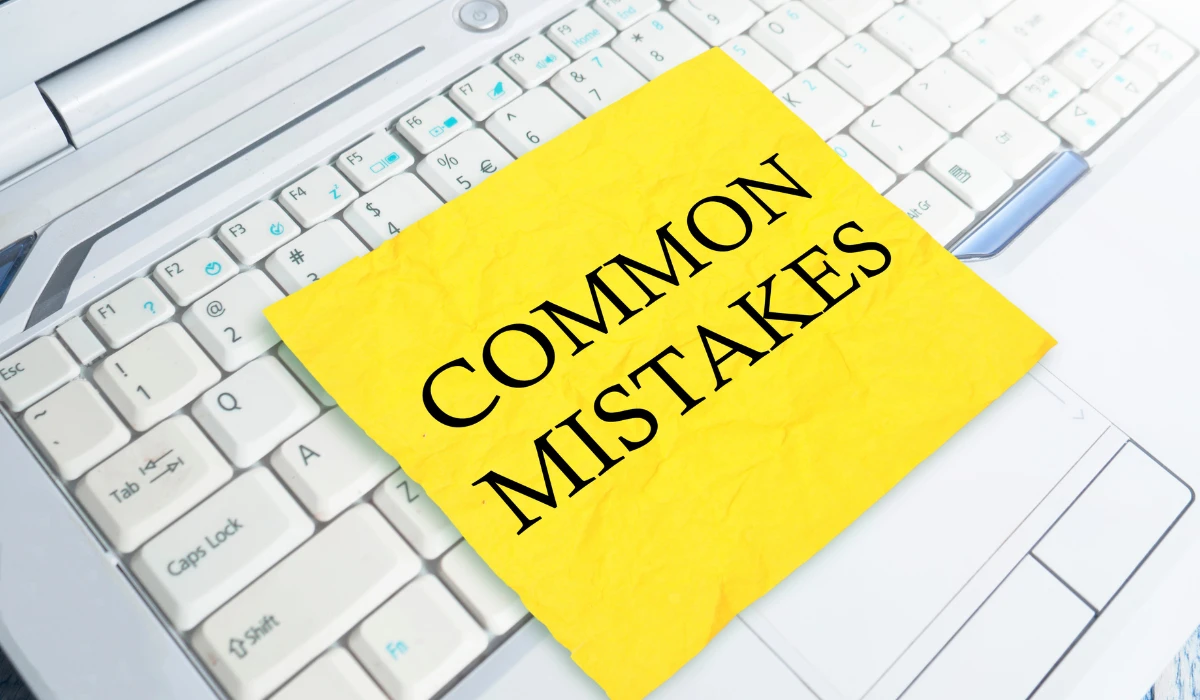Email marketing brings in $42 for every dollar spent, and 95% of search traffic goes to the first page of Google results. These remarkable numbers show why marketing 101 knowledge is significant to any business’s success in 2025.
Many beginners feel overwhelmed at the time they start their marketing trip. Marketing’s fundamentals stay constant while platforms evolve. The American Marketing Association’s definition states that marketing consists of activities and processes that create, communicate, and deliver value to customers.
We’ve created this complete guide to help you grasp marketing basics without confusing jargon. You’ll learn practical marketing steps, from creating your first strategy to measuring results. Everything is explained in simple terms that make sense.
Understanding Modern Marketing Basics
The American Marketing Association defines marketing as “the activity, set of institutions, and processes for creating, communicating, delivering, and exchanging offerings that have value for customers, clients, partners, and society at large”. This definition helps us understand modern marketing’s simple foundations.
What Marketing Really Means in 2025
Marketing in 2025 reaches far beyond promotion and sales. We focused on creating and delivering value through channels and processes of all types. Recent data shows that 64% of marketers now use AI and automation in their strategies. Technology has become essential to value delivery. Customer trust in brands has also changed – 82% of consumers believe user-generated content helps them find products and trust brands more. This reflects a change toward authentic, customer-focused approaches.
Why Traditional Marketing 101 Rules Still Matter
Traditional marketing principles remain vital despite technological advances. Marketing’s foundation rests on four key concepts that have grown over time:
- Production Concept: Focus on efficient production and wide availability
- Product Concept: Emphasis on quality and breakthroughs
- Marketing Concept: Customer needs at the center
- Societal Marketing: Balance between consumer needs and social welfare
These concepts shape modern strategies today. 92% of marketers still plan to maintain or increase their investment in traditional content marketing methods like blogging. This shows how established practices continue to provide value.
The Evolution of Marketing Fundamentals
Marketing’s progress has been remarkable. Marketing textbooks first appeared in the 1900s and mostly described market activities and institutions. The 1960s brought a major change as marketing became more sophisticated and scientific.
Modern marketing has transformed into an analytical discipline. The digital revolution created smarter customers who keep their mobile devices close. This led to new ways to involve customers, and 70% of marketers agree that building communities helps retain customers better.
Marketing 101 continues to adapt while staying true to its core purpose: creating customer value. This balance between breakthroughs and tradition forms marketing’s backbone. New marketers must understand both historical principles and today’s applications.
Building Your Marketing 101 Foundation
Three significant pillars form the foundation of marketing that determines your success in reaching and involving customers. These marketing basics will help you succeed.
Identifying Your Target Audience
Your target audience includes specific groups who want your products or services. We focused on understanding our ideal customer base to customize our marketing strategies and connect with desired customers. Companies waste USD 37.00 billion in ad spending annually from ads that fail to involve their target audience.
You can identify your target audience by determining what problem your products or services solve. Your analysis of existing customer base should look for common traits such as:
- Demographics (age, income, location)
- Psychographics (interests, values, lifestyle)
- Behavioral patterns (purchasing habits, media consumption)
Setting SMART Marketing Goals
The research shows that marketers who set goals are 376% more likely to report success than those who don’t. SMART goals – Specific, Measurable, Attainable, Relevant, and Time-bound – are vital to marketing success.
SMART goals help avoid vagueness and keep motivation high. Your tracking metrics should line up with your overall business strategy when setting these objectives. Each goal needs clear success indicators and deadlines to measure progress.
Creating Your Value Proposition
A strong value proposition helps your business stand out instead of fading into obscurity. Studies reveal that 80% of consumers prefer doing business with brands that offer customized interactions.
Your value proposition should focus on these key elements:
- Define the specific problem your product solves
- Identify your unique selling proposition (USP)
- Calculate the benefits whenever possible
Powerful value propositions use brief statements that highlight your product’s unique features. Your value proposition should explain how your product or service benefits customers in ways competitors can’t match.
Test your value proposition with existing customers to ensure it appeals to your target audience. You can gather feedback through surveys and improve your messaging based on ground customer insights.
Essential Marketing Channels for Beginners
Picking the right marketing channels is a vital step in your marketing experience. Research shows that more than 90% of marketers use multiple channels to reach their audience.
Digital Marketing Must-Haves
Digital marketing channels are the foundations of most marketing strategies in 2025. A website acts as the central hub for all digital marketing campaigns. Here are the most significant digital channels:
- Search Engine Optimization (SEO)
- Content Marketing
- Email Marketing
- Social Media Marketing
- Video Marketing
The numbers speak for themselves – email marketing generates USD 36.00 for every USD 1.00 spent. Video marketing has proven highly effective, especially when 82% of consumers make purchase decisions after watching branded videos.
Traditional Marketing 101: The Lasting Impact in 2025
Traditional marketing channels stay relevant in 2025. Television advertising packs a powerful punch and accounts for one-fifth of total U.S. media ad revenue. Radio advertising continues to thrive, with worldwide spending expected to reach USD 30.00 billion in 2024.
Print media, and magazines, in particular, keep a devoted consumer base. Local publications might be thinner now but still reach community audiences effectively. Many combine print with digital presence.
Choosing the Right Mix for Your Business
A combination of digital and traditional channels works best. Research shows businesses get better results when digital marketing tools and traditional tactics work together throughout all customer experience stages.
Your channel mix should depend on:
- Your target audience’s priorities and behaviors
- Available marketing budget
- Product or service type
- Business goals and objectives
Small businesses with tight budgets should focus on free and budget-friendly marketing channels. New businesses need to build brand awareness through cost-effective channels like social media and SEO.
Note that brand identity grows stronger with consistency across channels. Businesses can create a seamless customer experience and maximize their reach by blending traditional and digital channels together.
Creating Your First Marketing 101 Strategy
Marketing strategy success depends on careful planning and systematic execution. Our research shows that marketers who plan their projects and campaigns in advance are 356% more likely to report success.
Step-by-Step Strategy Development
Your journey begins with a full picture of your current situation through SWOT analysis. This analysis reveals your business’s strengths, weaknesses, opportunities, and threats. The next step define your target audience based on your market research. You need clear, measurable objectives using the SMART framework – goals that are Specific, Measurable, Attainable, Relevant, and Time-bound.
Budget Planning for Beginners
Your business stage determines budget allocation. Early-stage startups aiming for rapid growth should put 10-20% of revenue into marketing. Growth-mode businesses need to invest 7-10%, while mature companies usually maintain a 5% marketing budget.
The essential budget components include:
- Staff salaries and professional services
- Software and analytics tools
- Advertising costs
- Content creation expenses
- Channel-specific investments
ROI-positive channels deserve most of your attention, but keep some funds for strategic testing. The smart move is to put 60-80% of your budget into direct response marketing, 10-20% into brand awareness, and 10-20% into lead nurturing.
Marketing 101: Timeline and Implementation Tips
Your company’s performance and current situation shape an effective timeline. The core team needs specific tasks and clear responsibilities. A solid implementation timeline covers:
- Project Planning Phase: Review current performance and set objectives
- Resource Allocation: Assign team roles and responsibilities
- Campaign Development: Create marketing materials and content
- Launch Preparation: Set up tracking systems and analytics
- Execution: Implement campaigns across chosen channels
- Monitoring: Schedule regular progress reviews
Regular team meetings help discuss progress and adjust the course when needed. Your marketing plan timeline should stay flexible and serve as a guide that adapts to results and market changes.
Measuring Marketing 101 Success
The lifeblood of successful marketing campaigns lies in tracking and measuring results. Marketing organizations have changed their metrics to work better with their business goals – about 78% of them made this shift over the last several years.
Key Metrics for Beginners
KPIs help us assess how well marketing works. These basic metrics include:
- Customer Acquisition Cost (CAC): Calculate by dividing total marketing expenses by new customers acquired
- Customer Lifetime Value (CLV): Multiply the average revenue per customer by the average customer lifespan
- Conversion Rate: Number of completed actions divided by total visitors, multiplied by 100
- Return on Investment (ROI): Marketing revenue minus expenses, divided by expenses, multiplied by 100
- Organic Search Traffic: Measures website visitors from search engines
The numbers tell an interesting story – 70% of Chief Marketing Officers now arrange their KPIs with their CEO’s objectives. This shows how business-focused metrics have become vital to measure marketing success.
Marketing 101 Tools for Tracking Results
The right tracking tools let you measure your marketing efforts precisely. Google Analytics 4 gives a unique experience in website performance tracking, but it’s nowhere near enough for complete marketing analysis. Companies need several tools working together:
Analytics Platforms: These tools track performance across channels, campaigns, and landing pages. They spot patterns in data that lead to smarter decisions about spending marketing budgets.
CRM Software: These systems keep tabs on customer interactions and help calculate important metrics like CLV. The core team uses these platforms to share data smoothly between marketing and sales.
Attribution Tools: These trailblazing solutions connect marketing and sales by showing which channels bring in revenue. They also track both online and offline conversions.
Making Data-Driven Decisions
Evidence-based decision-making is vital for marketing success. Studies show that 87% of marketers say data is their most unused asset. Here’s how to make evidence-based decisions work:
- Define Clear Goals: Start by knowing your business objectives and picking relevant KPIs
- Focus on Actionable Metrics: Choose metrics that give clear direction and lead to specific actions
- Regular Analysis: Make time to review data and spot trends
- Continuous Optimization: Apply what you learn to improve your marketing campaigns
Companies using evidence-based marketing see amazing results. Those who track strategic metrics like gross revenue and market share are 89% more successful at assessing their campaigns.
Note that optimization needs constant monitoring and adjustments. Marketers can measure and improve their success by focusing on these key metrics, using the right tools, and making choices based on solid evidence.
Conclusion
Marketing success demands mastery of fundamentals and adaptation to modern trends. This piece explores everything in marketing concepts that help businesses create value and achieve measurable results.
Marketing 101 basics might seem overwhelming at first. The process becomes clearer when you break it down into practical steps. A solid foundation of target audience understanding, SMART goals, and strong value propositions creates the stage for success. The right mix of digital and traditional marketing channels will give maximum reach and help customers participate.
Data remains the lifeblood of modern marketing decisions. Businesses now track specific metrics and use advanced tools to measure their marketing effectiveness instead of guessing what works. This approach guides them to better ROI and builds stronger customer relationships.
Note that marketing 101 success takes time. Your business will grow steadily if you stick to these fundamental principles and stay current with industry trends. The key lies in delivering genuine value to your customers through each marketing effort.



